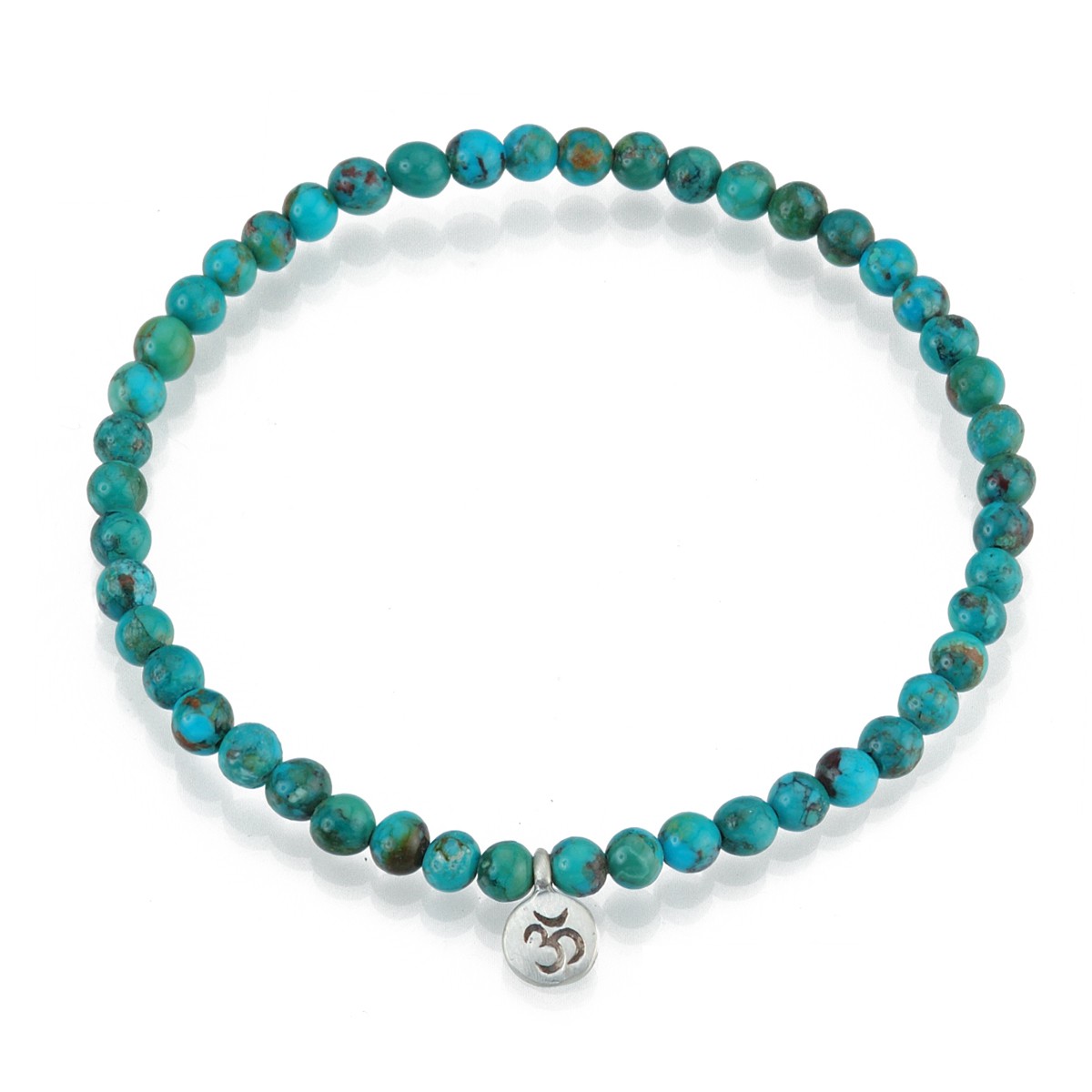
If you dress casually and would like to look more interesting and attractive, a piece of jewelry with precious or semi-precious stones would be the appropriate choice. In this article, we would like to talk about turquoise, with its bright blue- and- green hues, and would choose a turquoise bracelet, which we believe is suitable for almost any type of outfit. In case you are new to the world of jewelry, here are a few points to introduce this semi-precious gemstone and its history to you, to assist you in selecting the right quality of turquoise, and to advise you with respect to care an d maintenance of this alluring gemstone.
Turquoise is rare and valuable in finer grades and has been prized as an ornamental stone for thousands of years owing to its unique hue. In recent times, turquoise, like most other opaque gems, has been devalued by the introduction of treatments, imitations, and synthetics onto the market.
The word turquoise, which dates back to the 16th century, is derived from an Old French word for “Turkish”, because the mineral was first brought to Europe from Turkey, from the mines in historical Khorasan Province of Iran where it was given the name “phirouzeh”.
Hardness and richness of color are two of the major factors in determining the value of turquoise; while color is a matter of individual taste, generally speaking, the most desirable is a strong sky to “robin’s egg” blue. Whatever the color, turquoise should not be excessively soft or chalky; even if treated, such lesser material (to which most turquoise belongs) is liable to fade or discolor over time and will not hold up to normal use in jewelry.
Turquoise is treated in many different ways, some more permanent and radical than others. There is great controversy as to whether some of these treatments are at all necessary. One of the treatment methods is waxing or oiling of the gem to improve its color and lustre. When dealing with high quality turquoise, very little of the wax or oil is absorbed and the turquoise therefore does not rely on this treatment for its beauty. All other factors being equal, untreated turquoise will always be of higher value.
As a phosphate mineral, turquoise is inherently fragile and sensitive to perfumes and all solvents which may alter the color of turquoise gems, as will skin oils, and most commercial jewelry cleaning fluids. Prolonged exposure to direct sunlight may also discolor or dehydrate turquoise. Care should therefore be taken when wearing such jewels:


